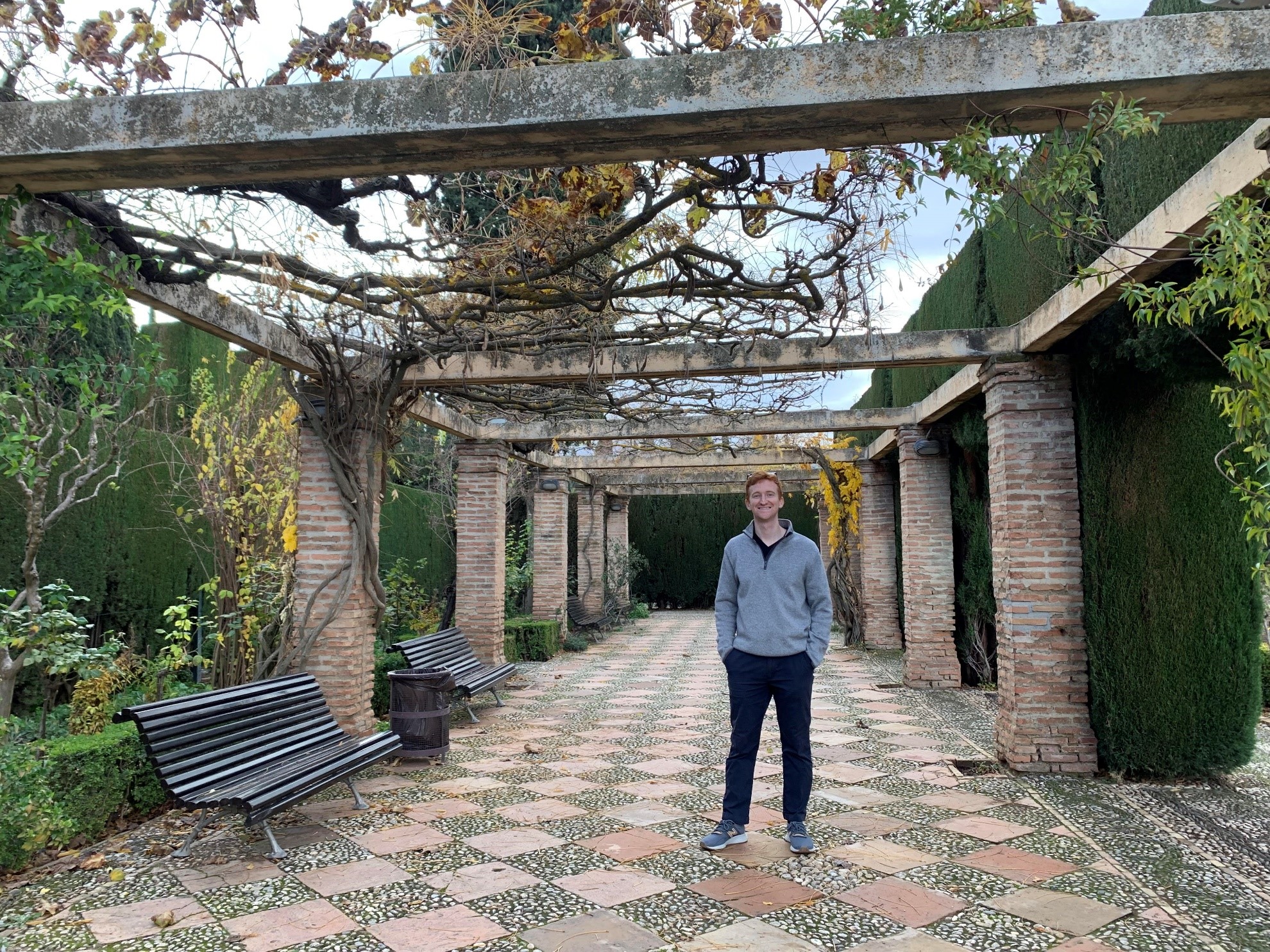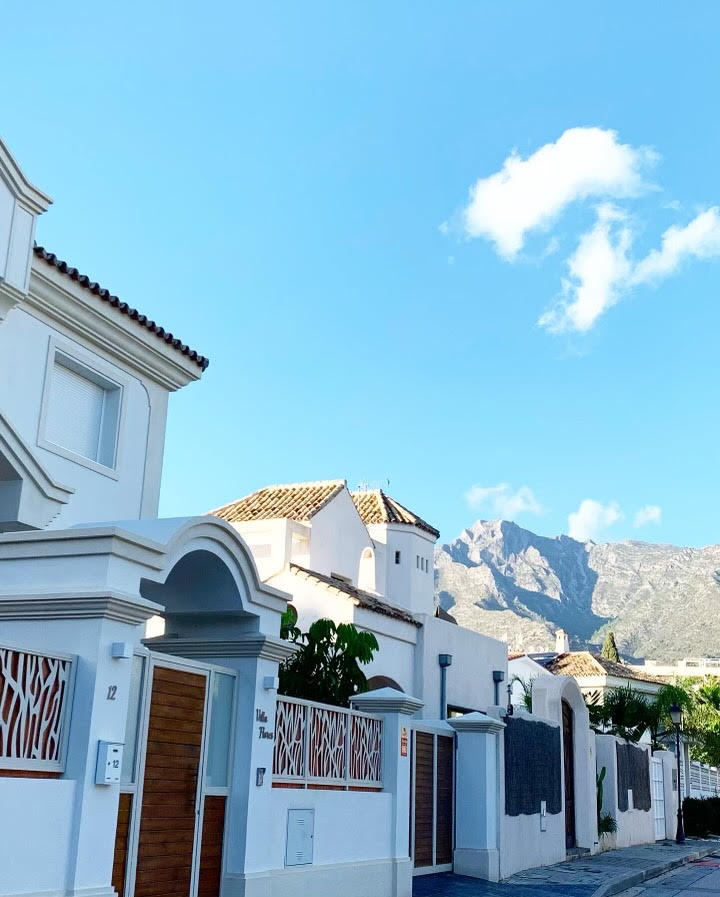In December of last year (2022), my wife and I took a vacation to Southern Spain. In preparation, I had been practicing my rusty Spanish skills for a couple of months on Duolingo. While on the trip, I had a great time trying to talk with the people we met there, and it inspired me to want to improve.

First, let’s set the bar at the level I’m aiming for. In the next couple of years, I would love to take another trip to a Spanish-speaking country and be able to confidently speak to and understand native speakers while there. This is what many call “conversational proficiency” (not to be confused with full fluency), and I think that’s a very reasonable goal. Becoming okay with the idea that I won’t sound excellent and will make many mistakes will allow me to reach that point much faster.
I also hope to get to where I can listen to podcasts of native speakers speaking at normal speeds (i.e., not podcasts made for language learning) and watch Spanish language TV without subtitles. I think getting to that point would make it easy to maintain my skills, since it just involves consuming fun entertainment.
This article is an overview of my plans and strategies for improving my Spanish this year. In two weeks, I’ll post a follow-up article about my word list I’m using for practice, as well as the verb conjugation practice Excel sheet I made (using VBA of course!). Both will be available for download there. Okay, let’s jump in!
My Background
While I am a beginner, I’m definitely not starting from zero. I took AP Spanish in high school, but didn’t pass the AP exam. Listening skills were definitely my most glaring weakness. When I would lose track of the translation while someone was speaking, I’d usually never pick it back up. Because of that, I knew that listening was one of the main things I would need to work on.
During this time in high school, I actually traveled to Peru and to Puerto Rico, but my listening skills were so poor that I was totally unable to communicate and improve. I also didn’t push onward and keep trying to talk to people despite any embarrassment from not understanding, which is something I like to think I would do today.
I took a couple of Spanish classes in college as well, but I must have done poorly on the placement exam, because these classes felt completely remedial. Since then, I didn’t think much about getting any better at Spanish, and over the next 9 years or so, I let my Spanish skills atrophy. So I have a long way to go, but have some basic vocabulary and understanding of sentence structure to build on.
The Inspiration
As I mentioned, I did 2-3 months of Duolingo for about 20 minutes per day before going on our vacation. This consisted of brushing up on basic phrases and vocabulary that I already knew, but wouldn’t have been able to recall without this preparation.
While in Spain, I had only basic conversations with native speakers, but made myself say at least one thing in Spanish to every waiter, Uber driver, etc. I had plenty of support from my wife Julie, who studied abroad in Mexico and speaks/understands Spanish much better than me, so I was able to muddle through conversations just fine. This turned out to be a lot of fun and motivated me to want to able to converse a lot better. Here’s one more picture from the Spain trip.

I had also read and heard some stuff over the last year or two (primarily from Tim Ferriss) about how learning a language doesn’t have to take forever and be a lifelong endeavor if you’re aiming for conversational proficiency. Most adults really overblow the process and say things about age being an obstacle, when, in reality, a dedicated adult can leverage a lot of strategy and focus and get to conversational proficiency extremely quickly. We will see if this pans out for me, but I found it motivating.
All of this made me to want to improve and add Spanish learning to the mix of my goals and activities… of which I probably have too many already :), not to mention a young daughter and a second kid on the way. So I knew any plans and aspirations should be kept to a reasonable scale that I can get to whenever I feel like it, hopefully still seeing slow and steady progress throughout the year.
Now for a more specific source of inspiration: during our Spain vacation, I stumbled on this YouTube video by a guy with the name Language Lords. In the same vein as the Tim Ferriss inspiration I mentioned, he studied Spanish for more than 40 hours a week, and claims to have reached conversational proficiency in 44 days (but was NOT starting from zero Spanish knowledge).
Obviously, I just mentioned that I have much, much less time per day to devote to the endeavor than he did, but nevertheless I found this video extremely inspiring, and I wanted to implement a few of his strategies.
I really loved one of his ideas, which is to watch a few Spanish language TED Talks over and over until you understand every word, using transcripts as needed. I’ve watched a couple of them multiple times with the intent to do this, but haven’t found the motivation to get into a routine with it, so I didn’t include it in my list of strategies. Regardless, armed with this inspiration and motivation, I have been implementing the following strategies.
The Strategies
Duolingo 15-20 minutes every day - This probably isn’t the absolute best learning resource out of the ones we will discuss (I see it get criticism online sometimes), but I love how it gamifies practice and measures your progress. I got sucked in enough that I want to get all of the achievements in the app, one of which includes keeping up a “streak” of 365 days of using the app. I might write a little article on the strategies I’m using to get all these achievements. It helps me solidify phrases and vocabulary, making sure I get enough repetition on new words and concepts.
Rote practice of verb conjugations - I’ll talk a lot more about this in the follow-up article. This was inspired by Language Lords and how he decided verb conjugation would be worth just practicing directly. I agreed, but took it a bit further and made an Excel sheet with VBA which made practicing it a little easier and more fun. I’ll have it available to download in the follow-up article. I’ll also talk about how I’m using it, as well as what tenses I plan to learn and when. I try to do this 10-15 minutes a day, but probably only follow through on 3-4 days per week.
Common vocabulary words with Anki - Again, more on this in the next article, but Anki is like a flashcard software. I decided I wanted a little bit of rote vocabulary practice to acquire a decent vocabulary base more quickly than I would organically through consuming content. I’ll have this word list ready to download in the follow-up in case anyone else wants to practice them too! Similar to the verb practicing, I shoot to do this 10 min per day, and usually end up doing it 3 or 4 days a week.
5 minute video recordings - I think this is the most important activity on the list. This was also taken from Language Lords’ video. Once every two weeks, I record a 5 minute video of me telling a story or talking on a subject, which I then send to my friend Ryan, who has achieved a very high level of Spanish mastery. If I want to take 2 or 3 attempts on the video, looking up some words or phrases in between, that is allowed.
While Ryan is not a native speaker, he has lived in Mexico for 11 years and majored in Spanish, so he’s an excellent resource that I’m lucky to have access to. He gives me feedback on mistakes and progress and recommendations on where to improve. Hopefully a little further down the road, we’ll be having live conversations in Spanish.
I think this is the most crucial activity on this list because it provides accountability. I know I’ll be recording a video and hope to show some improvement from the last one, so that motivates me to work more on the other activities. Also, it’s just really hard to talk for 5 minutes straight, and any vocabulary I acquire in the process is likely relevant to my life.
Listening to podcasts - There are a lot of good beginner and intermediate Spanish podcasts out there. I try to listen to “News in Slow Spanish”, both the Spain and Latin American version each week, which are 10 minute summaries of current events. I also try to listen to one episode of “Palabras Bravas” each week, which is a bit less dry. The two hosts talk about an ongoing story and then teach new phrases from it. It runs about 20 minutes per episode.
This is not a large time commitment, as all of these are short, but it ensures consistency on a minimum amount of listening practice, and I can already tell my listening skills have improved dramatically.
Netflix repeats - My strategy here is a little more fun. I have been watching Spanish language TV series on Netflix. In order to get legitimate practice from it, I watch an episode with Spanish audio and English subtitles, and then before moving onto the next episode, I rewatch it with Spanish audio and Spanish subtitles.
This has been enjoyable and helps improve both my vocabulary and listening skills. I hope I eventually get good enough that I can do the first viewing with Spanish subtitles and the second one without subtitles. Of course, single viewings without subtitles is the dream.
So far, I have watched the first seasons of two shows. Control Zeta is a high school drama with a crime investigation mixed in, and El Vecino is a comedy about an irresponsible 30-something year old man who gets super powers. Both have been great and I would recommend them!
Conclusion
I’ve been having a lot of fun working on these various approaches so far, and I can already see some progress. A big thank you to Ryan for reviewing my awkward speaking videos and sending feedback.
Does anyone else have any language learning aspirations or experience? If so, let me know! And if there are any other approaches that any readers swear by, send them my way!